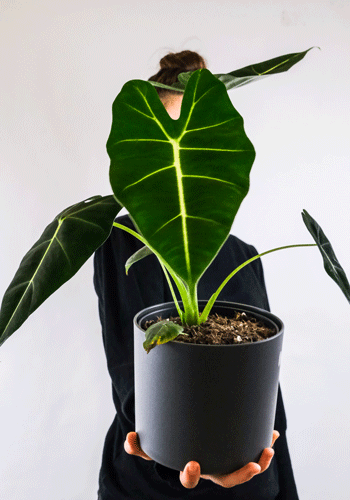As people continue to greenify their home, how can growers capitalise on the surge in demand for houseplants?
Little more than a decade ago, it’s fair to say that I put the “fail” into phalaenopsis as I shamefully failed (or should I say phaled) to give my orchids the attention they required. Fast forward ten years, I’m now the proud owner of so many orchids and other houseplants that I could give the hot houses at Royal Botanic Gardens, Kew, a run for their money.

I’ve acquired the majority of these little green beauts since the start of the pandemic. Millions of other people have also purchased houseplants during the past 18 months – a phenomenon that has been coined “the plantdemic.”
But as this summer’s seminar (organised by the International Association of Horticultural Producers [AIPH]) on how growers can capitalise on the houseplant trend revealed, the current “trend” for houseplants is more than the result of people’s desire to adorn their homes during lockdown.
Influencer Michael Perry – aka Mr Plant Geek – opined that the houseplant trend began before the pandemic. He said: “There was a lot of talk about wellbeing in 2019 – and one of those things that helps with wellbeing is obviously plants.”
Alice van Veen, commercial manager for Royal Lemkes – a family business based in the Netherlands supplying large retailers such as Ikea, Aldi and Kingfisher, also noted: “It’s not a trend – it’s more of a [change in] lifestyle. And this positive movement was already happening pre-coronavirus.” She added that the pandemic accelerated the movement towards achieving a healthy living and work environment, and positive mental wellbeing. “So, we expect that this will continue in the coming years.”

Joseph Roberts, CEO of Florida-based indoor plant grower and importer, Foremostco Inc, reported a 60% increase in houseplant sales. He added: “Covid has certainly been a catalyst for the explosion in demand that has occurred. But it’s a trend in the horticulture industry that’s been growing for a number of years now. We saw an increase in demand back in 2018 and 2019 and so we started to build a bit more [stock] in anticipation of continued growth.”
“We didn’t expect the explosion we saw in 2020 and that’s continuing into 2021 – but it important to keep in mind for all of us that it’s a continuing trend. Live plants are something that millennials and the next generation are appreciating.”
Alice reported that, currently, Royal Lemkes is unable to meet the demand for indoor plants – so much so that she does not expect the balance between demand and supply to be fulfilled until 2023-2024.
“At the moment, as a large-scale retail service partner, we are unable to meet consumer demand, and this is quite critical. We have to deal with major availability problems on the core range, fast movers, especially ‘indoor green.’ We have to scale up in a short time – and this is our biggest challenge.”
As Joseph pointed out “We don’t manufacture widgets that we can add an extra 100,000 units to [an order] tomorrow. We grow plants, which are live goods. “
Managing demand
Given the global surge in demand, it’s a challenging time for growers of “indoor green,” reported Alice, who noted that increased investment in technologies such as tissue culture propagation can help growers to better scale up their production.

She revealed that, ten years ago, plants imported from outside of Europe accounted for 70 per cent of stock. Nowadays, as demand for houseplants has increased across the globe, the availability of young houseplants to the European markets has decreased. Imported houseplants therefore make up 40% of the market share.
Meanwhile, Joseph advised growers who are fighting to increase supply to “manage the demand.” “We need to moderate ourselves, temper the expectations, realise that if we are getting 10-15% growth year over year that’s a very positive thing. We don’t have to double or triple our sales today because what we really don’t want to do is overproduce on certain items, because then they get commoditised very quickly.”
He added: “We absolutely have to maintain our quality standards. We need to be careful and make sure that what we are sending out is good quality plants that the consumer continues to want and appreciate. And if we are smart about it, I believe that we have many more years of this continuing upwards trend.”
Joseph also asserted that, given that the demand is out there, growers should be “in a reasonable manner” looking at raising their prices.
Furthermore, Leo de Vries, director of The Netherlands-based KP Holland, which breeds, grows and markets plants, warned growers not to become complacent. “We have to keep the long-term trend of greenifying your environment going. So, promotional campaigns are important.”
Mr Plant Geek pointed out that eye-catching images of plants on Instagram have boosted the houseplant trend. I must confess that Instagram has probably fed my houseplants addiction.
But because “a new variety takes longer to breed than trends change on Instagram” Leo advised growers to, firstly, remain focussed on their products before keeping in mind how they can play a role in meeting the current (social media-inspired) trends.
The AIPH “How to capitalise on the recent houseplant trend’?" webinar took place on June 30, 2021, and was hosted by Jungle Talk’s Ed Smit and Renee Snijders.
